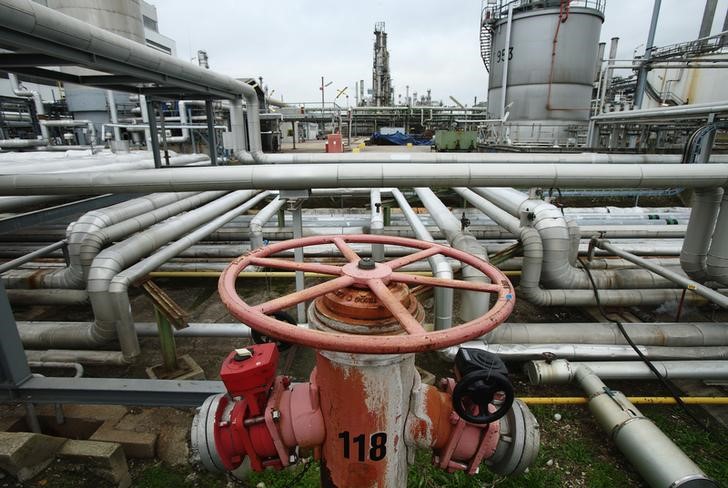Investing.com - U.S. crude oil inventories rose less than expected last week, the Energy Information Administration said in its weekly report on Wednesday.
The EIA data showed that crude oil inventories increased by 3.22 million barrels in the week to October 26.
That was compared to forecasts for a stockpile build of 4.11 million barrels, after a build of 6.35 million barrels in the previous week.
London-traded Brent crude futures rose 0.16% to $76.03 a barrel by 10:36 AM ET (14:36 GMT) from their last close, compared to $75.72 ahead of the release.
U.S. crude prices traded down slipped 0.06% to $66.14 barrel, compared to $65.95 prior to the publication.
The EIA report also showed that gasoline inventories fell by 3.16 million barrels, compared to expectations for a draw of 2.14 million barrels, while distillate stockpiles decreased by 4.05 million barrels, compared to forecasts for a drop of 1.37 million.
Oil is headed for a monthly decline of 10% in October, its worst performance since 2016 as crude prices have been hit by concerns over the outlook for global demand amid simmering trade tensions, coupled with increasing supply and rising inventories.
Saudi Arabia pledged earlier in the month to raise oil output to offset the fall from Iranian exports expected to be caused by the U.S. sanctions which go into effect on Nov. 4, while Russia also said on Saturday that there is no reason for the country to cut its production levels.
After many months of concern about shortage of supply ahead of the U.S. sanctions on Iran, the oil market is beginning to worry about possible oversupply and inventories that are rising in many parts of the world.
The market has also fretted over the continuing trade dispute between the U.S. and China and its potential economic impact. Speculation points to a slowdown in the global economy denting demand for oil even further.
International Energy Agency executive director Fatih Birol warned on Tuesday that there are two downward pressures on global oil demand growth.
“One is high oil prices, and in many countries, they’re directly related to consumer prices. The second one is global economic growth momentum slowing down,” Reuters quoted Birol as saying.
